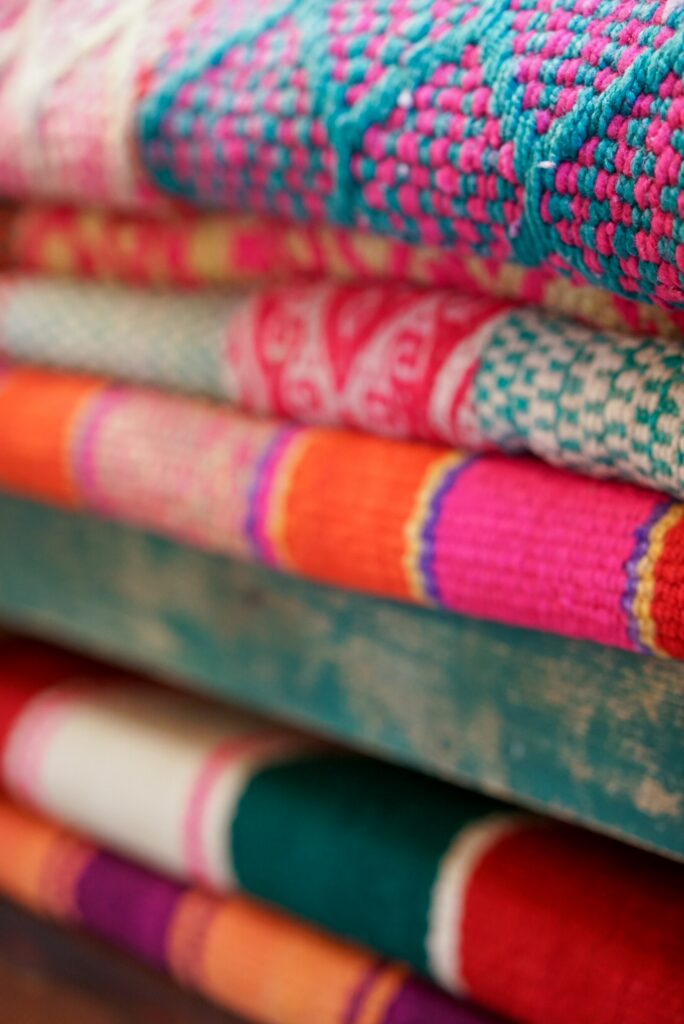Finding IP Value
Supreme Court to Rule on Copyright Referral Issue in Suit against H&M

By: Stephen C. Hall, contributing author Dasha Kolyaskina, Wyatt Summer Associate
Earlier this month, the Supreme Court granted certiorari on a question arising from a copyright dispute between Unicolors and H&M.[1] In its opinion expected next year, the Supreme Court could resolve an intra-circuit split on whether deceptive or fraudulent intent is necessary to invalidate a copyright under 17 U.S.C. § 411(b).
In 2016, Unicolors, a textile designer, sued H&M for copyright infringement, alleging that the clothing retailer infringed one of Unicolors’ geometric patterns for a jacket and a skirt.[2] After trial, a jury awarded Unicolors nearly $900,000 in damages.[3] H&M appealed the judgment, arguing that Unicolors’ copyright registration was invalid.[4] While the Ninth Circuit declined to invalidate the certificate, the court reversed Unicolors’ award and remanded with instructions to refer Unicolors’ certificate to the Copyright Office to determine whether the alleged inaccuracies would have caused Unicolors’ registration to be refused.[5]
The Supreme Court will decide whether “17 U.S.C. § 411 requires referral to the Copyright Office where there is no indicia of fraud or material error as to the work at issue in the subject copyright registration.”[6] Section 411 requires that a copyright be registered with the Copyright Office before a certificate holder can bring an action for copyright infringement.[7] A certificate of registration—even one with inaccurate information—satisfies this requirement, unless inaccurate information was included in the application “with knowledge that it was inaccurate,” and the inaccuracy “if known, would have caused the Register of Copyrights to refuse registration.”[8] The section also requires the referral of such an allegedly inaccurate copyright registration to the Copyright Office:
In any case in which inaccurate information described under paragraph (1) is alleged, the court shall request the Register of Copyrights to advise the court whether the inaccurate information, if known, would have caused the Register of Copyrights to refuse registration.[9]
The United States District Court for the Central District of California and the Ninth Circuit Court of Appeals reached opposite conclusions about the applicable standard for alleging an inaccuracy under § 411 as well as the existence of an inaccuracy in Unicolors’ application.[10]
After the jury returned a verdict in favor of Unicolors, H&M filed a renewed motion for judgment as a matter of law arguing that the district court should have entered judgment in its favor because Unicolors had knowingly submitted inaccurate information in its copyright application.[11] The District Court denied the motion because it found H&M was required to show that Unicolors had not just knowledge but “intent-to-defraud” in order to invalidate the registration.[12] The Ninth Circuit disagreed and found that § 411 required only “knowing” inclusion of inaccurate information in the application.[13]
In addition, the courts disagreed whether Unicolors’ registration in fact contained material errors. This disagreement stemmed from the meaning of “single unit” in the regulatory requirements of the particular registration Unicolors sought. Unicolors registered a collection of its geometric designs, including the allegedly infringed design, “as a single work” as permitted under the Copyright Act.[14] To register such a collection, the works must have been “included in a single unit of publication.”[15] “Publication” is the initial “distribution” or “offering to distribute” the “work to the public” by sale or other transaction.[16]
The District Court concluded that Unicolors’ application did not contain any inaccuracies because a single-unit registration required only that the works in a collection be published on the same date.[17] Because Unicolors displayed all of the designs in this collection together in a showroom on the given date of publication, it met this standard.
The Circuit Court disagreed and imposed what Unicolors later described as an erroneous “bundling” requirement—meaning a registrant must have “first published the collection of works in a singular, bundled collection.”[18] The court reasoned that Unicolors’ registration failed under this test because some of the works in the collection were not available and not shown to the public on the given date of publication.[19] The “confined” works in the collection were not shown in the showroom with the others and were available only to individual customers who were given exclusive rights for a period of time.[20] Because some designs were available to the public and others were only available to particular customers, the collection was not all published as a single unit, and the application was inaccurate.[21] In its petition for a writ of certiorari, Unicolors strongly disputed the Ninth Circuit’s interpretation of the facts and asserted that all of the designs in the collection at issue were “placed in Unicolors’ showroom for customer viewing” on the date of publication.[22]
Unicolors ultimately sought certification of questions related to both legal disagreements—whether 17 U.S.C. § 411 requires intent to defraud and whether works must be “bundled” to be registered as a “single unit.”[23] The Supreme Court certified the former but not the latter and gave no reason for its certification decision.[24] Although the Court will likely clarify the requisite intent for invalidation of a copyright under § 411, the requirements for registering a collection of works as a “single unit” remains murky for now.
[1] Unicolors, Inc. v. H&M Hennes & Mauritz, L.P., 20-915, 2021 WL 2194846 (U.S. June 1, 2021).
[2] Unicolors, Inc. v. H&M Hennes & Mauritz, L.P., 959 F.3d 1194, 1196 (9th Cir. 2020), cert. granted in part, 20-915, 2021 WL 2194846 (U.S. June 1, 2021).
[3] Id. The jury initially awarded $817,920 in profit disgorgement damages and $28,800 in lost profit damages. This amount was later reduced to $266,209.33 after Unicolors accepted a remittitur in place of a new trial. Unicolors, Inc. v. H&M Hennes & Mauritz, L.P., 959 F.3d 1194, 1197 (9th Cir. 2020), cert. granted in part, 20-915, 2021 WL 2194846 (U.S. June 1, 2021). With attorneys’ fees and costs, H&M owed Unidays $780,774.80. Id.
[4] Id. at 1197.
[5] Id. at 1200-01.
[6] Unicolors, Inc. v. H&M Hennes & Mauritz, L.P., 20-915, 2021 WL 2194846 (U.S. June 1, 2021).
[7] 17 U.S.C.A. § 411(a) (West).
[8] Id. at § 411(b)(1).
[9] Id. at § 411(b)(2).
[10] Unicolors, 959 F.3d at 1198.
[11] Id. at 1197-98.
[12] Id. at 1198.
[13] Id.
[14] 37 C.F.R. § 202.3(b)(4).
[15] Id. § 202.3(b)(4)(i)(A) (emphasis added).
[16] 17 U.S.C. § 101.
[17] Unicolors, 959 F.3d at 1198.
[18] Id. at 1199.
[19] Id. at 1200.
[20] Id.
[21] Id.
[22] Petition for Writ of Certiorari at *5, Unicolors, 2021 WL 86892 (No. 20-915).
[23] Id. at *i.
[24] Unicolors, Inc. v. H&M Hennes & Mauritz, L.P., 20-915, 2021 WL 2194846 (U.S. June 1, 2021).
